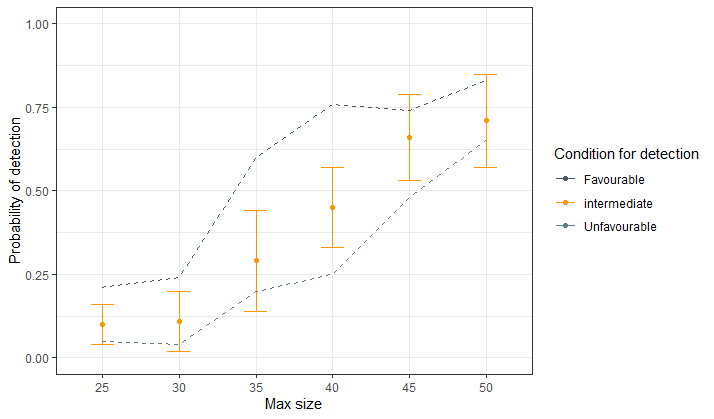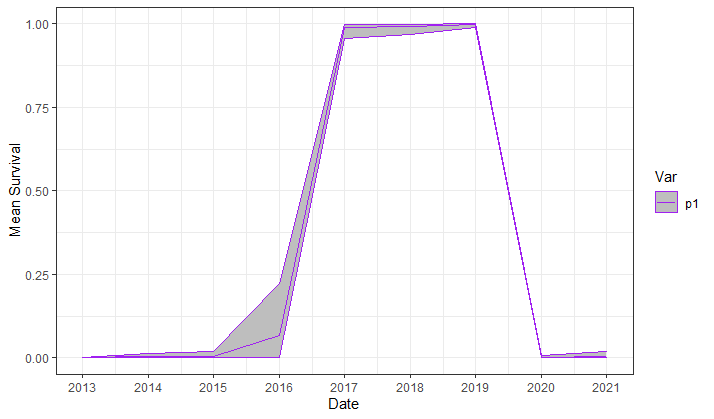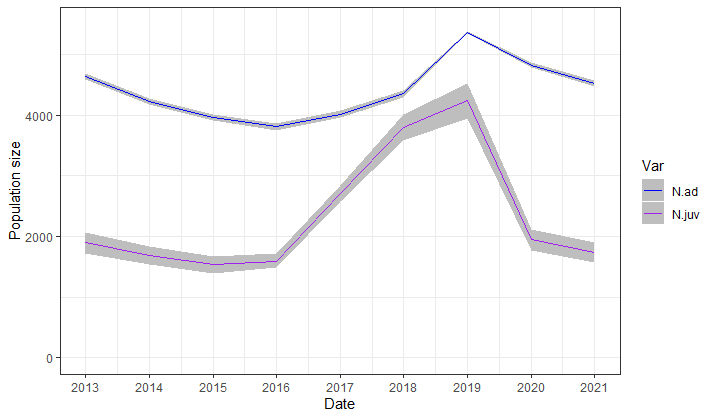Detection of juveniles

Detection of juveniles showed that the chance of finding 1 mussel under 30 mm (largest size of juveniles) is quite low. And that the larger the mussel is the easier it is to find it. This means that finding the whole population of juveniles is extremely low.
Most environmental conditions showed no effect on decreasing or increasing the chance of finding a juvenile mussel. High amount of shade was the only condition that showed an (decreasing) effect on detection.
Juvenile vital rates estimatates


Juvenile survival showed periodically low survival with between 2013 to 2016 and between 2020 to 2021 which shows that almost all juveniles dies these years. While between 2017 to 2019 almost all juveniles survive instead. Annual juvenile survival showed a similar dynamic to the source sink dynamic.
Fecundity for the 19 U. crassus populations was estimated at 0.37 i.e., one adult contributes 0.37 juveniles each year.
Estimates on number of juveniles and adults showed that during years with low survival, juveniles consisted primarily of 1-year olds. The estimates also showed that very few juveniles are able to reach adulthood even during years with high juvenile survival due to only when juveniles become 5 years old they are considered adults.
Yearly growth increments
No tested abiotic factor indicated an effect on yearly growth increments
There can be three reasons on why there is no indication by tested abiotic factors on growth, not the main limited factors for growth, factors were not elevated enough to show an effect on growth and therefore probably more complex than a single factor.